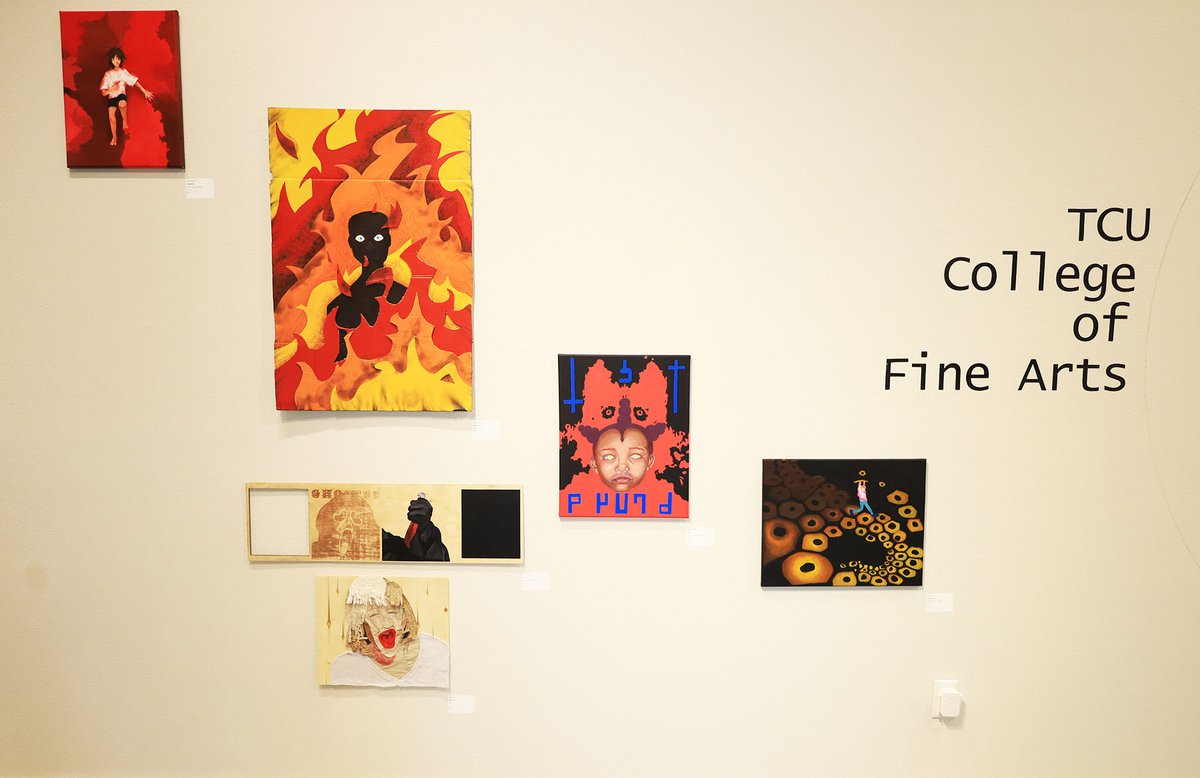
In a former dive motel turned gallery in Fort Worth’s Near Southside, a quiet artistic revolution took place. The Pool Art Gallery — equal parts punk and polished — hosted a show that, in a just world, might have drawn curators from L.A., gallerists from Brooklyn, and tech philosophers from the Bay. But this wasn’t a gathering of art-world elites. It was the NAMNAL Exhibition, and the twenty-two featured artists were teenagers.
The exhibition, which closes May 12, was the result of a wildly ambitious STEAM-based initiative called NAMNAL (New Age Media – New Age Learning), a program born in a high school classroom and nurtured in university labs. In its third year, NAMNAL represented a bet on youth, new media, and one big philosophical question: In an age where artificial intelligence can generate sculptures from sketches, who’s the real artist — the student or the software?
Founded by Dhananjaya “DJ” Perera, a Sri Lankan American artist and AP art teacher at Boswell High School, NAMNAL was equal parts creative collective and educational experiment. Perera’s résumé read like someone twice his age: MFA from Pratt at 23, former advisor to Sri Lanka’s UN mission, visiting artist at the Kimbell and the Modern. But NAMNAL, he said, was his proudest work.
“I’m a traditionalist,” Perera said. “But as an educator, I had to put that aside. The vision was always about giving these students exposure to what’s next — new media, new forms, new questions.”
The exhibition at The Pool was that vision made physical. What looked like a chaotic sprawl of 100 pieces was actually just 25 core works — each reimagined, reprocessed, and repurposed across mediums. Sketches became etchings. Scans became 3D prints. Projection mapping met embroidery. Titles like “Self-Inflicted Harm,” “A Slice of Qi,” and “Broken Home” hinted at work that was philosophical, political, and deeply personal.
One standout piece layered body image scans into a multimedia collage. Another, inspired by Chinese medicine, evolved from a sketch into a 3D model, then was spray-painted and mounted like a relic of the future. A third, by a student born in the Democratic Republic of Congo, explored the tension between Buddhism, witchcraft, and Western religion in a gold-tone etching that vibrated with unease.
“These weren’t class projects,” Perera insisted. “They were part of a sustained investigation. It was about showing students they could create work that belongs in real galleries — and then actually putting it there.”
That effort was backed by major institutional partners. Many of the artworks, repurposed through unique prototypical designs, were developed in collaboration with TCU’s College of Fine Arts and UT Dallas’ Harry W. Bass Jr. School of Arts, Humanities, and Technology. Some student sketches were sent to UTD weeks in advance and returned as complex 3D prints. Others were built on-site during workshops. Still others, rougher in form, were proudly displayed as evidence of the program’s early, messy beginnings.
The point, Perera said, was process — not perfection.
“This is how you build a real creative ecosystem,” he said. “You find the weaknesses in your partnerships, and you plan accordingly.”
The outcomes were already tangible. Several students had been accepted to elite institutions: the School of the Art Institute of Chicago, the Rhode Island School of Design, and Perera’s own alma mater, the Pratt Institute. None, ironically, opted to stay in Fort Worth.
“That should tell us something,” Perera said. “Why aren’t we retaining our own talent? What does Fort Worth have to offer its creative youth?”
For Perera, it wasn’t just a rhetorical question. It was a challenge for city leaders, institutions, and cultural stakeholders.
NAMNAL wasn’t just about creating art. It was about building infrastructure: equipping high schoolers with the tools, language, and credentials to thrive in the art world, whether they stayed in Texas or headed for either coast.
“I told my students, this isn’t extra credit. This is a career,” Perera said. “And Fort Worth has to decide whether it wants to be part of that journey, or just the place they came from.”
At the April 12 opening, the gallery buzzed. Parents, professors, and curious collectors moved from piece to piece: a 3D-printed Corinthian column, a translucent resin crucifix, a sketch so precisely replicated it seemed to mock the idea of authorship itself.
As visitors moved through the space, the question lingered: Who got credit for this? The teen who imagined it? The AI that produced it? The technician who refined it?
Maybe it didn’t matter. Or maybe, as Perera argued, asking the question was the whole point.
Perera explains: “The vision was always about giving these students exposure to what’s next — new media, new forms, new questions.”
